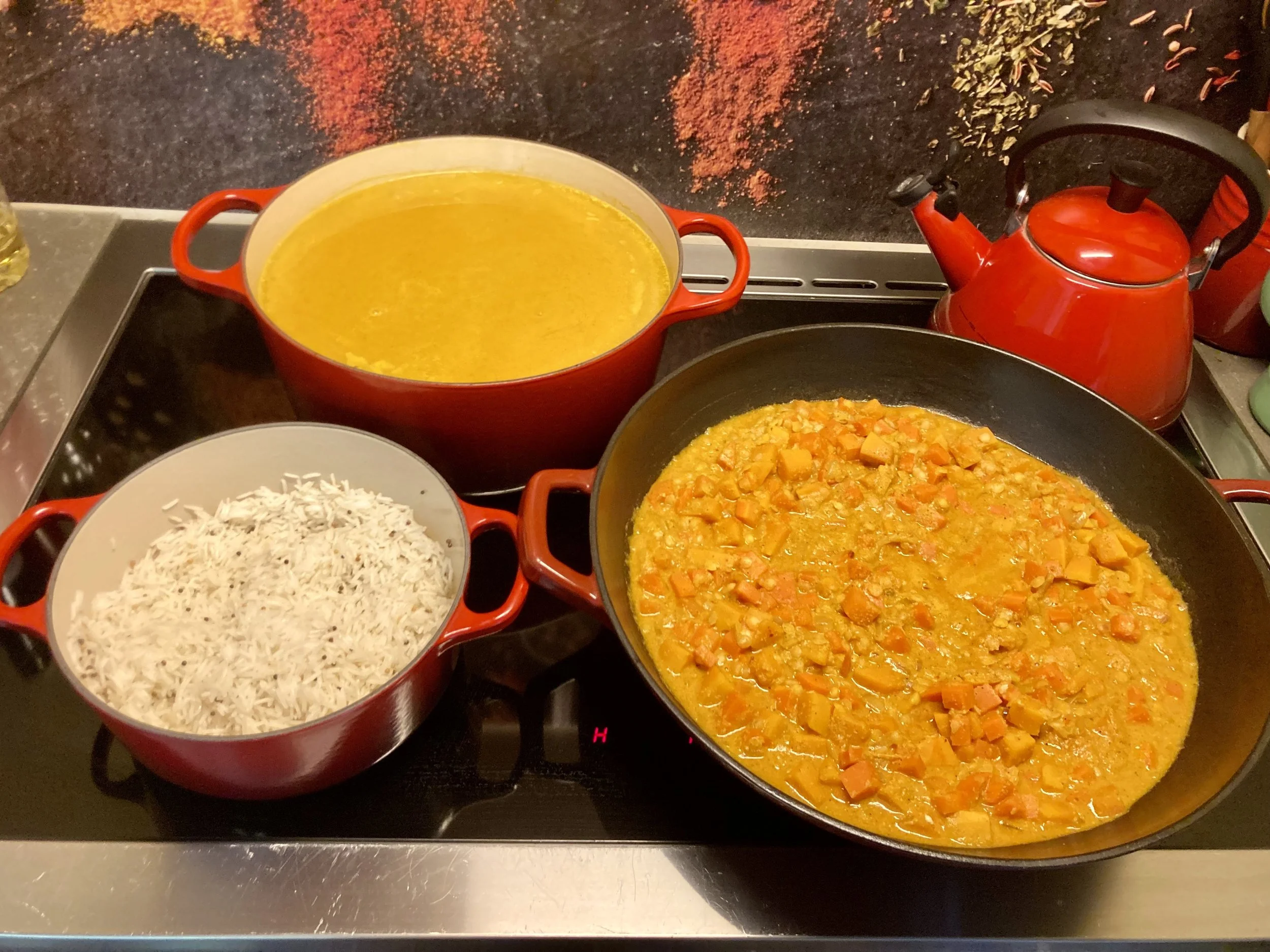Autumn Harvest and the Power of Local Food
Autumn is on its way — and that means harvest time! Besides the mountains of potatoes we already collected, this week our community farm blessed us with bright orange pumpkins and crisp carrots. And as always: completely pesticide-free and grown in harmony with nature.
With baskets full of pumpkins, carrots, potatoes, onions, garlic, beetroot, cauliflower, red cabbage, and romanesco, our menus for the coming weeks are practically writing themselves. Think of comforting soups, hearty oven dishes, flavorful curries, fresh salads, and jars of beautifully fermented or preserved vegetables.
But what’s truly special — and worth celebrating — is why our harvest is so rich year after year. For the fifth season in a row, we’ve seen an abundance that proves a simple truth: caring for the land pays off. No pesticides, no heavy machinery, no chemicals that destroy soil life. Just respectful, mindful farming.
It’s not rocket science — it’s common sense. Using the earth for what it’s meant for: producing local food for local communities, not mass production for export or cheap prefab junk food. Of course, even I admit to the occasional guilty pleasure of a bag of chips or a chocolate bar — but that’s the exception, not the rule.
The bigger question is often raised: “If we don’t produce in massive monocultures, how do we feed 10 billion people?” Well, let’s start by reducing livestock farming. Around 70% of all agricultural land worldwide is used just to feed animals, not people. Imagine freeing up that space for crops grown directly for human consumption — close to where people live, in tune with the seasons.
And by preserving food — through freezing, fermenting, drying, or bottling — we can easily enjoy the richness of each season all year round. (If you’re curious, check out my earlier blogs on food preservation and fermentation!)
By doing this, we create a better environment for future generations, a kinder world for animals, and a more balanced, nutritious diet for ourselves. In the end, that means better physical and mental health — something we all strive for, right?
Enough preaching — let’s get cooking!
Here are two of my favorite autumn dishes using our freshly harvested carrots and pumpkins:
Carrot–Pumpkin Soup
Ingredients:
1 medium orange pumpkin (cut into small cubes)
1 kg carrots (cut into half-moons)
2 onions
3 cloves garlic (chopped)
1 tsp each of kurkuma, Bengal curry powder, paprika powder
Fresh ginger (chopped)
Sunflower oil
2–3 L vegetable stock
250 ml coconut milk
1 tsp peanut butter
Preparation:
Heat the oil in a large soup pot. Sauté the onions for a few minutes, then add garlic and ginger. Fry for 1–2 minutes, add all the spices, and stir well. Add the carrots and pumpkin, then pour in the vegetable stock. Let it simmer for 30–40 minutes until everything is tender. Finally, stir in the coconut milk and peanut butter and blend until smooth. Taste and adjust with extra herbs or spices as you like.
Carrot–Pumpkin Curry
Ingredients:
1 medium pumpkin (in small cubes)
1 kg carrots (in half-moons)
2 onions
3 cloves garlic
1 tsp each of kurkuma, Bengal curry powder, paprika powder
1 tsp each of chili flakes, cinnamon, fresh ginger
Sunflower oil
2 handfuls cashew nuts
1 cup dried lentils (cooked)
1 small can (65 g) tomato paste
Preparation:
In a large wok, heat some oil and sauté the onions until soft and golden. In the meantime, briefly boil the carrots and pumpkin (1–2 minutes), take the veggies out of the boiling water then add the lentils to the same water and cook gently for 5–10 minutes. Keep the cooking water — it’s full of nutrients! Soak the cashew nuts in some of this water.
Add garlic, ginger, and tomato paste to the onions and fry for a few more minutes. Stir in all the spices, then add the carrots, pumpkin, and some of the reserved water. Blend the soaked cashews into a smooth paste and stir into the curry. Let it all simmer for 15–20 minutes. Taste, adjust, and enjoy — with rice, bread, or just as it is.
Cooking with local, seasonal vegetables isn’t just a way to fill your plate — it’s a small act of change. It supports your community, your farmers, and your health.
So, grab those pumpkins and carrots, and enjoy the taste of autumn — straight from the land that sustains us all.
